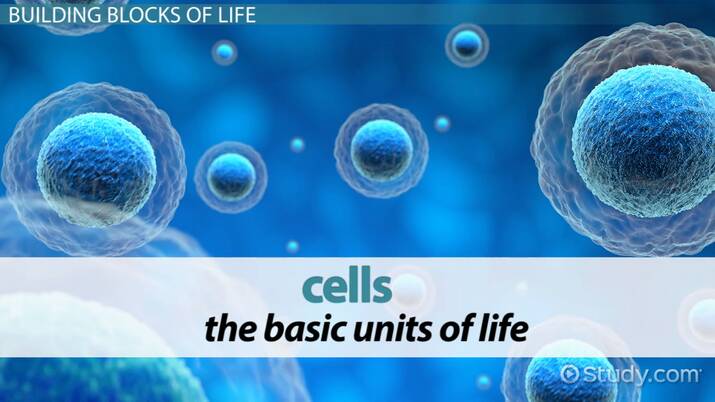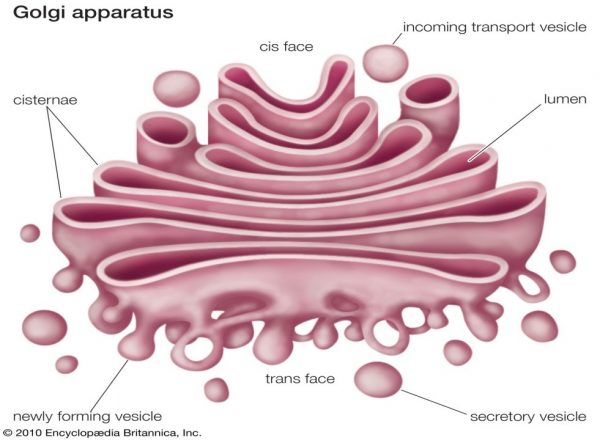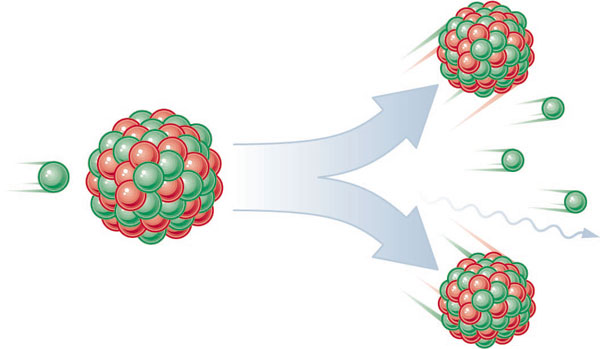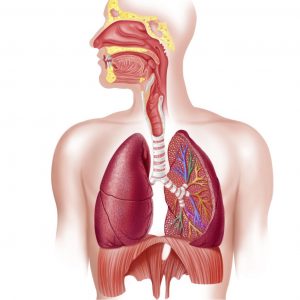Science | Jan 30, 2019
Cell The Fundamental Unit of Life

In Cell, we are going to cover the following aspects:
- Definition of Cell
- Shape and Size of Cell
- Types of Cell
- Structure of Cell
- Cell Organelles
- Difference Between Animal Cell and Plant Cell
Have a look around; you would see lots of living and non-living things around you. Have you ever thought of what makes a living organism a living thing?

The answer here is Cell which makes up the whole living body and is a structural and functional unit of life. The cell is a unitary body which repeats itself to make a living body. If you better understand chemistry, you can say that cell is equivalent to an atom which is being repeated to make matter. On the other hand, if we talk generally, consider a house made of bricks where each brick act as a unit. If we demolish the brick house, we would end up having single bricks which is the smallest indivisible unit. So is true for the cell.
- Cell structural unit as it makes up the living
- A cell as a functional unit as any function performed by the body is sum up of the function performed by cells.
How do you think cell was first discovered?
It was Sir Robert Hooke who saw the cell under early microscope (1665). He observed box and noticed repeating box-like structure which were termed as “cellule”-Latin word for the cell.
 Cell compartments observed by Sir Robert Hooke under early microscope (Micrographia, 1665)
Cell compartments observed by Sir Robert Hooke under early microscope (Micrographia, 1665)
Other major milestones in the field of cell biology:
- Antony won Leeuwenhoek (1674) - Discovered protozoa and bacteria.
- Robert Brown (1831) – Nucleus in the cell was described.
- Schleiden and Schwann (1838) - Proposed cell theory.
- Rudolf Virchow (1858) - Given “omnis cellula e cellula”- which means all cells develop only from existing cells.
- Albert Kolliker (1857) –First to described mitochondria.
- Camillo Golgi (1898)-Described the golgi apparatus in cell.
Cell theory:
Classical Theory
It states that-
- All living Bodies are composed of one or more type of cells.
- Cells are the basic unit of life.
- “omni cellulae e cellula”-All cells arise from pre-existing cells.
- The cell is the unit of structure, physiology, and organization in all the living bodies.
- The cells retain a dual existence as being a distinct entity and also act as building block living organisms.
Exceptions in classical Cell Theory
- Virus being alive is still a contradictive statement since they are not made up of cells but still, they have some features of life. So, cell theory fails to describe the existence of the virus.
- The first cell came into existence when macromolecules got up together e. it did not originate from pre-existing cells. There is no precise definition for the first cell.
- Mitochondria and chloroplasts reproduce independently from the rest of the cell since they have their own genetic material within them.
Modern Cell theory: Some aspect of classical cell theory had been modified to purpose Modern cell theory. It is well-accepted theory and states as follows:
- The cell is the fundamental unit of structurein living organisms.
- All cells in living body arise from pre-existing cells by division.
 New cells (Daughter cell) are being formed
New cells (Daughter cell) are being formed
- Energy flow occurs within cells.
- Cells contain hereditary information [Genetic material-DNA (Deoxyribonucleic Acid)] that is passed from one cell to another cell during cell division.
- All cells are basically the same in chemical composition.
- All known living things are made up of one or more cells.
- Some cells are unicellular-single cell perform all functions and some are multicellular e. composed of more than one cell.
- The activity of an organism depends on the total activity of independent cells.
Shape and Size of Cell:
Cells come in various size and shape like oval, spherical, rectangular, spindle-shaped, or totally irregular like the nerve cell. The size of cells varies from organisms to organisms. Most of the cells are microscopic in size like red blood cells (RBC) while some cells are fairly large like nerve cells and they have sub-microscopic organelles.
 Shape and Size of Cell
Shape and Size of Cell
Why cells are so small? It is because of Chemistry. Smaller the surface area more will be the absorption. Since all nutrient and exchange of information happens through plasma membrane the large surface area is required.
Types of Organisms on the Basis of Number of Cells:There are two kinds of organisms on the basis of cells:
- Unicellular Organisms:Unicellular organisms are made up of a single cell and single cell perform the entire function of body/cell. For example: Amoeba, Paramecium, bacteria, etc.
- Multicellular Organisms:The organisms which are made up of more than one type of cell and all cells work in coordination to perform the function of bodies, are called multicellular organisms. Different cells in the body are specialized to perform particular tasks in the body. For example: Plants, human beings, animals, etc.
Types of Cells
The cells can be categorized in two types:
- Prokaryotic Cell
- Eukaryotic Cell
- Prokaryotic cell
Prokaryotic cells are cells which lacks true nucleus i.e. they don’t have any membrane around its nucleus. Genetic material lies naked in the cell. They are primitive cell and considered as incomplete. Prokaryotes are always unicellular organisms. For example, archaebacteria, bacteria, blue-green algae are all prokaryotes.
Eukaryotic Cell
Eukaryotic cells are the cells in which has a true nucleus. Including all living organisms (both unicellular and multicellular organisms) except bacteria and blue-green algae have these types of cells.
 Picture shows parts of prokaryotic and Eukaryotic organism
Picture shows parts of prokaryotic and Eukaryotic organism
Difference between Prokaryotic and Eukaryotic Cells:
|
S/No |
Features |
Prokaryotic cell |
Eukaryotic cell |
|
1. |
Size |
Small (1-10 µm) |
large (5-100 µm) |
|
2. |
Nucleus |
Absent |
Present |
|
3. |
Genetic material |
Contains at least single chromosome. |
It contains more than one chromosome. |
|
4. |
Nucleolus |
Absent |
Present |
|
5. |
Membrane bound organelles |
Absent |
Present (e.g. Mitochondria, endoplasmic reticulum, golgi apparatus, plastids, lysosomes, etc.) |
|
6. |
Cell division |
Cell divides by fission or budding. |
Cell divides by mitotic or meiotic cell division. |
Structure of Cell: Cell has Mitochondria, plastids, endoplasmic reticulum, golgi apparatus, lysosomes, etc., are present)
three basic components:
- Cell wall and cell membrane
- Nucleus
- Cytoplasm
Cell membrane or Plasma membrane:
The plasma membrane is the outer covering of the cell that separates the internal contents of the cell from its external environment. It is a very thin, delicate, elastic and selectively permeable membrane which means that it selectively allows external content to go inside or vice verse. For e.g. Nutrient, gases etc. It mainly made up of lipid and protein. All cell plants, animals and microorganisms comprise a plasma membrane.
 Plasma membrane of any cell
Plasma membrane of any cell
Function:
- It maintains the integrity of cell
- It selectively allows the exchange of fluids across the membrane.
Cell wall: All plant cells and some bacterial cells have cell wall outsides of the plasma membrane. It is no living, thick and freely permeable in nature. Plant cell wall mainly composed of cellulose on the other hand bacterial cell wall may have a different compound in it. All animal cells lack a cell wall.
 Microscopic view of onion peel representing cell wall
Microscopic view of onion peel representing cell wall
Functions:
- It provides the shape and rigidity to the plant cell.
- It prevents dryness in cell.
- It helps bacteria to survive in harsh conditions.
Nucleus:
Nucleus contains the genetic material (DNA-DeoxyriboNucleic Acid) which controls all the functions in the cell. The genetic material lies in the cell in condensed form, called chromosomes. Nucleus of all eukaryotic cells has a membrane around them while prokaryotic cell doesn’t. The region where naked DNA lies in a prokaryotic cell is called nucleoid region.
 Showing nucleus, chromosome and DNA
Showing nucleus, chromosome and DNA
Functions:
- Nucleus controls all the activities of the cell whether it’s functional or structural.
- It controls the cell cycle e. it regulates how many a cell would divide
- Nucleus is the depository of genes.
Cytoplasm:
It is jelly-like present inside the cell membrane which is mainly composed of water, amino acids, sugars, nucleic acid, vitamin etc. All the organelles are present inside cytoplasm.
 Cytoplasm
Cytoplasm
Functions:
- It provides a surface for various reaction to occur. For g. metabolic reaction like glycolysis take place in cytoplasm
- All the major function like protein synthesis occurs in cytoplasm
Cell organelles:
Cell has many sub-cellular bodies called organelles. Each organelle inside cell performs some vital function which makes the cell alive. These are as follow:
- Golgi Apparatus:
Golgi apparatus Or Golgi body is present in eukaryotic cells and is a double membrane-bound organelle. It is made up of a series of flat sacs that lie next to each other, called cisternae.
 Golgi apparatus
Golgi apparatus
Functions:
- It stores, modify, package and dispatch the substances like protein.
- It is also aid in the synthesis of cell wall, plasma membrane and lysosomes etc.
- Endoplasmic Reticulum:
 Endoplasmic Reticulum
Endoplasmic Reticulum
It consists of the series membranous tube-like structures that extends from nuclear envelope. Based on the presence of organelle called RIBOSOMES it can be of two types:
(i) Rough Endoplasmic Reticulum (RER): In RER ribosomes are embedded in the walls of endoplasmic reticulum.
(ii) Smooth Endoplasmic Reticulum (SER): In SER ribosomes are absent. It helps in the formation of secreting lipids.
Functions:
- It provides internal support to cell.
- It also functions in transport of various substances from nuclear membrane to plasma membrane or vice versa.
- RER aid in synthesis and transportation of proteins while SER helps in synthesis and transportation of lipids.
- Ribosomes:
These are extremely small spherical bodies composed of two units- Smaller unit (the 30s in bacteria and 40s in eukaryotes) and a larger unit (50s in bacteria and 60s in eukaryotes). It may be free floating in the cytosol or they can be embedded in the endoplasmic reticulum. These are composed of ribonucleic acid (RNA) and proteins.
 Ribosomes
Ribosomes
Function:
- The major function of ribosome is in protein synthesis.
- Mitochondria:
Mitochondria is also known as powerhouse of the cell. It is small rod-shaped, double membrane organelles. The inner membrane has many folds, they are called cristae. These membranes contain a system called electron transport chain which converts ADP into ATP (Energy currency of cell). They have their own genetic material and ribosomes. Prokaryotic cell lacks Mitochondrion.
 Mitochondria
Mitochondria
Functions:
- Mitochondria are the site of cellular respiration since this is a place where oxygen is consumed and provides energy for all the activities of the body.
- Plastids:
Plastids are only specific to plant a cell which means animal cells lack plastid. This is the site where photosynthesis in plants takes place and they are able to synthesize their own food. They are a double memberous spherical body that has its own DNA and ribosomes to synthesize crucial protein required. Plastids are of three types:
 Plastids
Plastids
- Chloroplasts - Contain a pigment inside called chlorophyll which indeed responsible for the green colour of most of the plants. Chloroplasts aid in the synthesis of food from carbon dioxide and sunlight by the process of photosynthesis.
- Chromoplast - Plastid that are responsible for storage and production of pigments. They are responsible for the color of flower and plant leaves.
- Leucoplasts -They are present in non-photosynthetic parts of the plant. These are colourless bodies responsible for the storage of lipids or proteins.
Function:
- Chloroplasts utilize solar energy and Carbon dioxide to make their food.
- Chromoplast and leucoplast are responsible for pigmentation of plants and also aid in storage of lipids and proteins
- Lysosomes:
Lysosomes are small packs of digestive enzymes that have a lipid layer around them. Whenever they encounter any foreign particles (bacteria and virus) or damaged cell parts, they take those up inside where digestive enzymes break particles into smaller units.
 Lysosomes
Lysosomes
Functions:
- Lysosomes eat up the foreign body like bacteria and virus thus act as a defense system of the body.
- They also clear of the waste of cells i.e. damaged organelles or cells that undergo apoptosis.
- Vacuoles:
Vacuoles are and membrane-bound organelles. These take up a large plant of plant cells while they are merely present in animal cells.
 Vacuoles
Vacuoles
Function:
- They help to maintain the osmotic pressure in a cell.
- They aid in rigidity to the plant cell and also provide turgidity to cell.
- They act as storage units in plant cells.
- Peroxisomes:
These are membrane-bound organelle present in eukaryotic cell that has strong oxidative enzymes. During the process of oxidation of lipids and amino acid, Hydrogen peroxide is released so the name is peroxisomes.
 Peroxisomes
Peroxisomes
Function:
- They aid in oxidation of various biomolecules.
- The help in the biosynthesis of lipid specifically known as plasminogen.
- Centrosome and Centrioles:
Centrosomes are present in the animal’s cell only. They help in the equal division of chromosomes between daughter cell. They are composed of two centrioles each made up of microtubules. They release spindle fibres that attach to chromosome thus ensuring equal division.
 Centrosomes
Centrosomes
- Function:
They help in cell division.
Difference between Animal Cell and Plant Cell:
|
S/No |
Feature |
Animal cell |
Plant cell |
|
1. |
Size |
Generally of small size |
Usually larger than animal cells |
|
2. |
Cell wall |
Absent |
Cell wall present and usually composed of cellulose. |
|
3 |
Plastids |
Absent |
Present |
|
4. |
Vacuoles |
Rarely present and are of small size |
Make up a large part of cell |
|
5. |
Centrioles |
Present |
Absent |
Structure of Plant cell and Animal cell:
 Structure of Plant cell and Animal cell
Structure of Plant cell and Animal cell















Post a Comment: